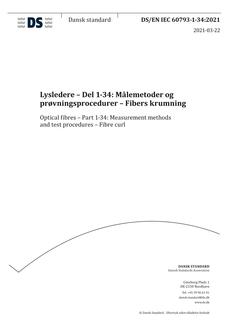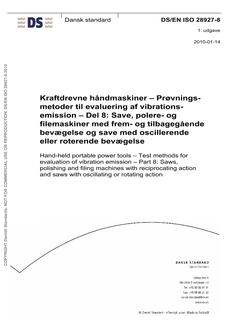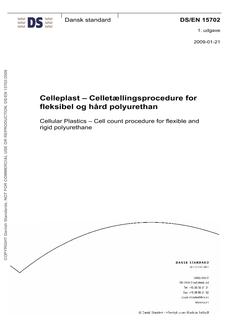-
-
Available Formats
- Availability
- Priced From ( in USD )
-
Available Formats
-
- Immediate download
- $83.00
- Add to Cart
-
- Printed Edition
- Ships in 1-2 business days
- $83.00
- Add to Cart
Customers Who Bought This Also Bought
-

DANSK DS/EN IEC 60793-1-34
Priced From $64.00 -

DANSK DS/EN 1729-1
Priced From $110.00 -

DANSK DS/EN ISO 28927-8
Priced From $90.00 -

DANSK DS/EN 15702
Priced From $38.00
About This Item
Full Description
This Technical Specification (TS) describes the general principles, including testing procedures and requirements, for the evaluation of performances of low-cost sensor systems for the monitoring of gaseous compounds in ambient air at fixed sites. The evaluation of sensor systems includes tests that shall be performed under prescribed laboratory and/or field conditions. This TS is not intended for the test of sensors systems used for mobile devices, for the testing of networks of sensor nodes, or for indoor air monitoring although their potential importance is recognized and they could be the subjects of future TS documents. Low-cost sensors are based on several principles of operations, e. g. amperometric sensors, metal oxides, optical sensors (Infra-Red absorption) etc. However, sensors share some common features, regarding their portability and low-cost compared to traditional reference methods. Typically, sensors are able to continuously monitor air pollution, with low response time ranging between a few tens of seconds and a few minutes. The described procedure is applicable to the determination of the mass concentration of air pollutants. The pollutants that are considered in this TS consists of: -the gaseous pollutants regulated under Directives 2008/50/EC: O3, NO2 and NO, CO, SO2 and benzene, in the range of concentrations expected in outdoor ambient air; -CO2 as proxy for activities involving combustion processes or for CO2 evaporation from soil or water. When applying the current Technical Specifications, the evaluation of sensors considers the thresholds, limits and averaging times that are defined into the Air Quality Directive (2008/50/EC)[1]. Generally, the Directive sets Limit Values consists of an annual average that is computed by averaging hourly values. For sensors, it can be useful to select shorter averaging time. In order to rely on the results of tests this protocol, future users shall make sure that sensors will be implemented with the same configuration as the sensor submitted to this protocol. This can include: the same power supply, data acquisition, data processing, identical sampling/ protective box and periodicity of calibration. The sensor shall be submitted to the same regime of QA/QC and maintenance operation as during tests. In addition, it is strongly recommended that sensors measurements are periodically compared side-by-side with the reference method. For the purpose of this technical specification sensor systems are significantly less expensive than reference methods for the same pollutant.





